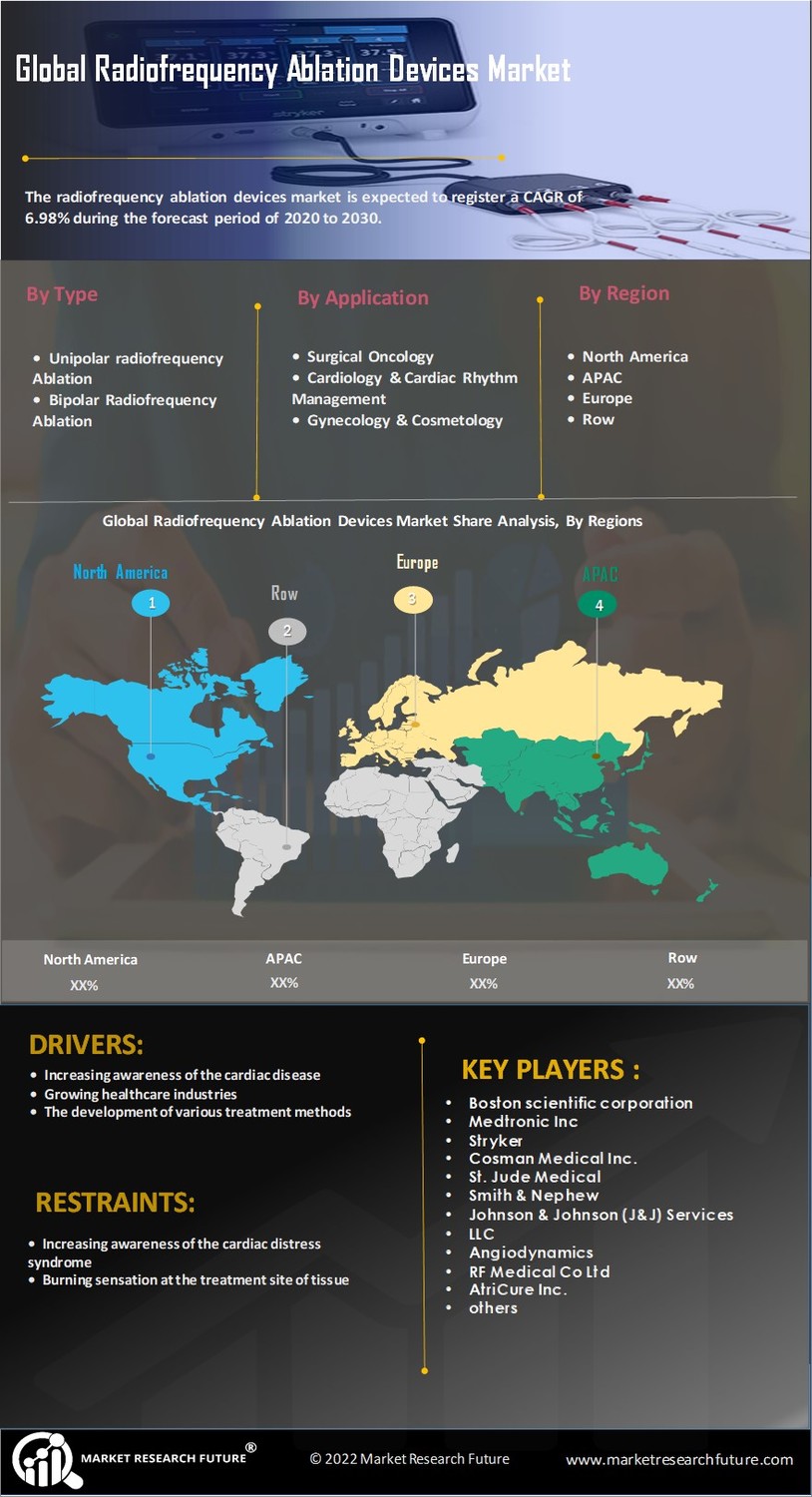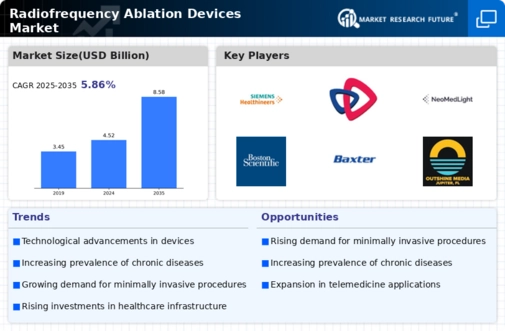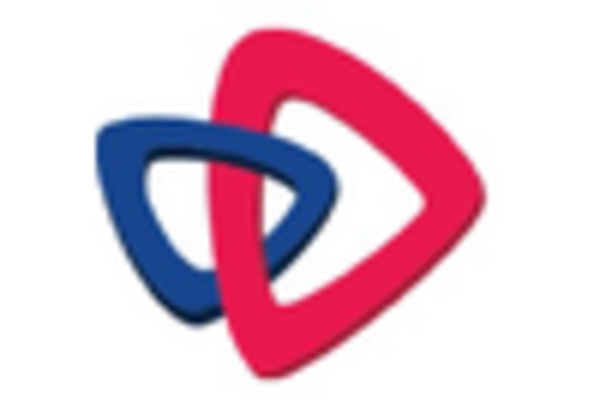Growing Incidence of Chronic Diseases
The rising prevalence of chronic diseases such as cancer, cardiovascular disorders, and chronic pain conditions is propelling the Radiofrequency Ablation Devices Market. As these diseases become more common, the demand for effective treatment options increases. For instance, radiofrequency ablation is widely used in oncology for tumor ablation, which is becoming a standard procedure in many healthcare settings. The World Health Organization has reported that cancer cases are expected to rise by 70% over the next two decades, indicating a substantial market opportunity for radiofrequency ablation devices. This growing incidence of chronic diseases necessitates innovative treatment solutions, thereby driving market growth.
Rising Demand for Minimally Invasive Procedures
The increasing preference for minimally invasive procedures is a key driver in the Radiofrequency Ablation Devices Market. Patients are increasingly opting for treatments that promise shorter recovery times, reduced pain, and minimal scarring. Radiofrequency ablation, being a minimally invasive technique, aligns perfectly with these patient preferences. According to recent data, the market for minimally invasive surgical devices is expected to reach USD 50 billion by 2026, with radiofrequency ablation devices capturing a significant share. This trend is further supported by healthcare providers who are adopting these technologies to enhance patient satisfaction and operational efficiency.
Increasing Investment in Healthcare Infrastructure
Investment in healthcare infrastructure is a significant driver for the Radiofrequency Ablation Devices Market. Governments and private entities are allocating substantial resources to enhance healthcare facilities, particularly in developing regions. This investment is aimed at improving access to advanced medical technologies, including radiofrequency ablation devices. As healthcare systems evolve, the integration of these devices into standard treatment protocols is becoming more prevalent. Reports suggest that healthcare spending is projected to increase by 5% annually, which will likely facilitate the adoption of radiofrequency ablation technologies in various medical settings, thus expanding the market.
Rising Awareness and Education on Treatment Options
The growing awareness and education regarding treatment options available in the Radiofrequency Ablation Devices Market are crucial for market expansion. Patients are becoming more informed about their health and treatment alternatives, leading to increased inquiries about radiofrequency ablation as a viable option for various conditions. Healthcare providers are also focusing on educating patients about the benefits and risks associated with these procedures. This heightened awareness is likely to drive demand, as more patients seek out minimally invasive solutions for their health issues. Consequently, the market is expected to see a rise in adoption rates, further propelling growth.
Technological Advancements in Radiofrequency Ablation Devices
The Radiofrequency Ablation Devices Market is experiencing a surge in technological advancements that enhance the efficacy and safety of procedures. Innovations such as improved electrode designs and real-time imaging techniques are being integrated into devices, allowing for more precise targeting of tissues. This precision reduces the risk of damage to surrounding healthy tissues, thereby improving patient outcomes. Furthermore, the development of multi-electrode systems enables simultaneous ablation of multiple sites, which is particularly beneficial in treating conditions like atrial fibrillation. As a result, the market is projected to grow at a compound annual growth rate of approximately 10% over the next few years, driven by these advancements.


















Leave a Comment